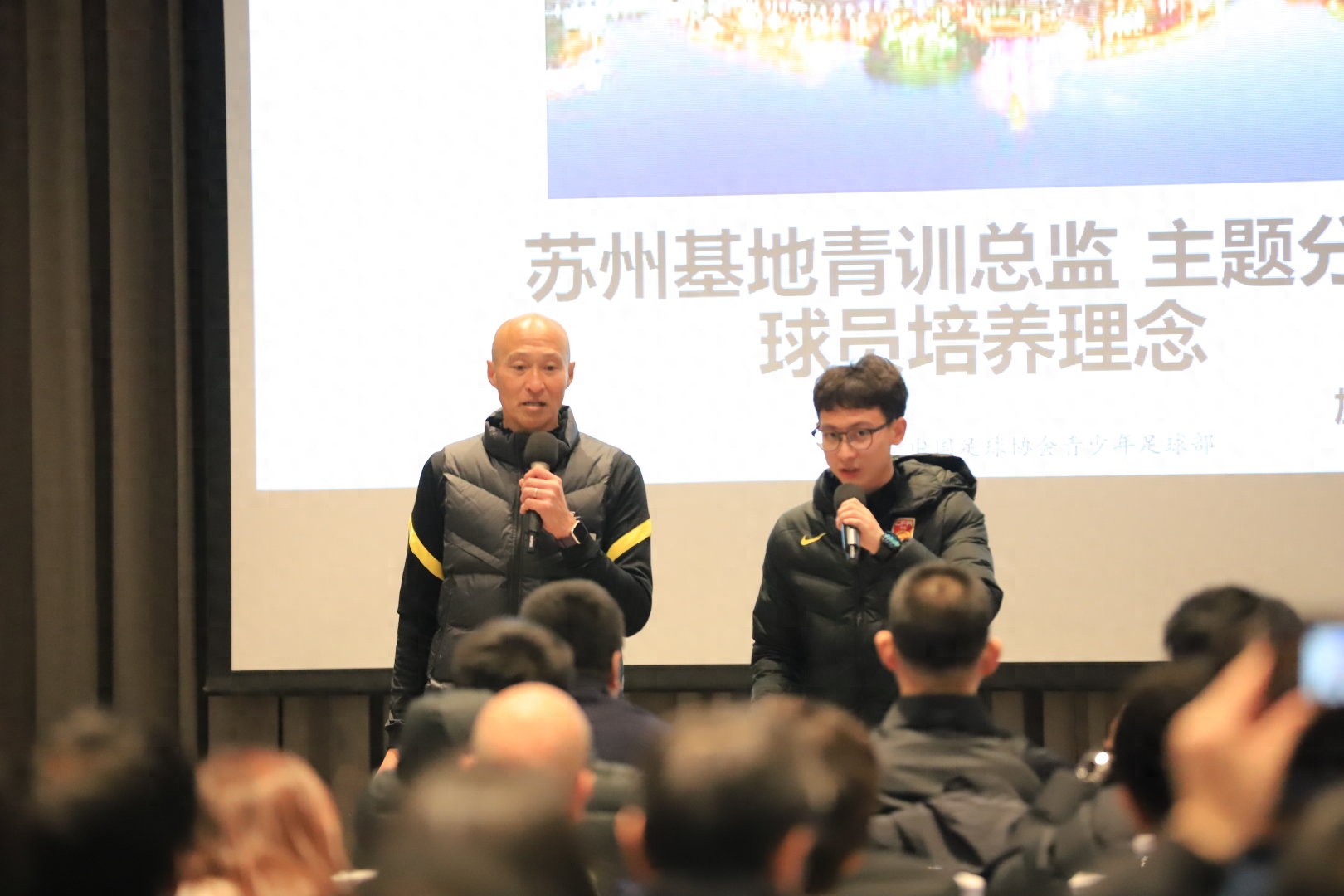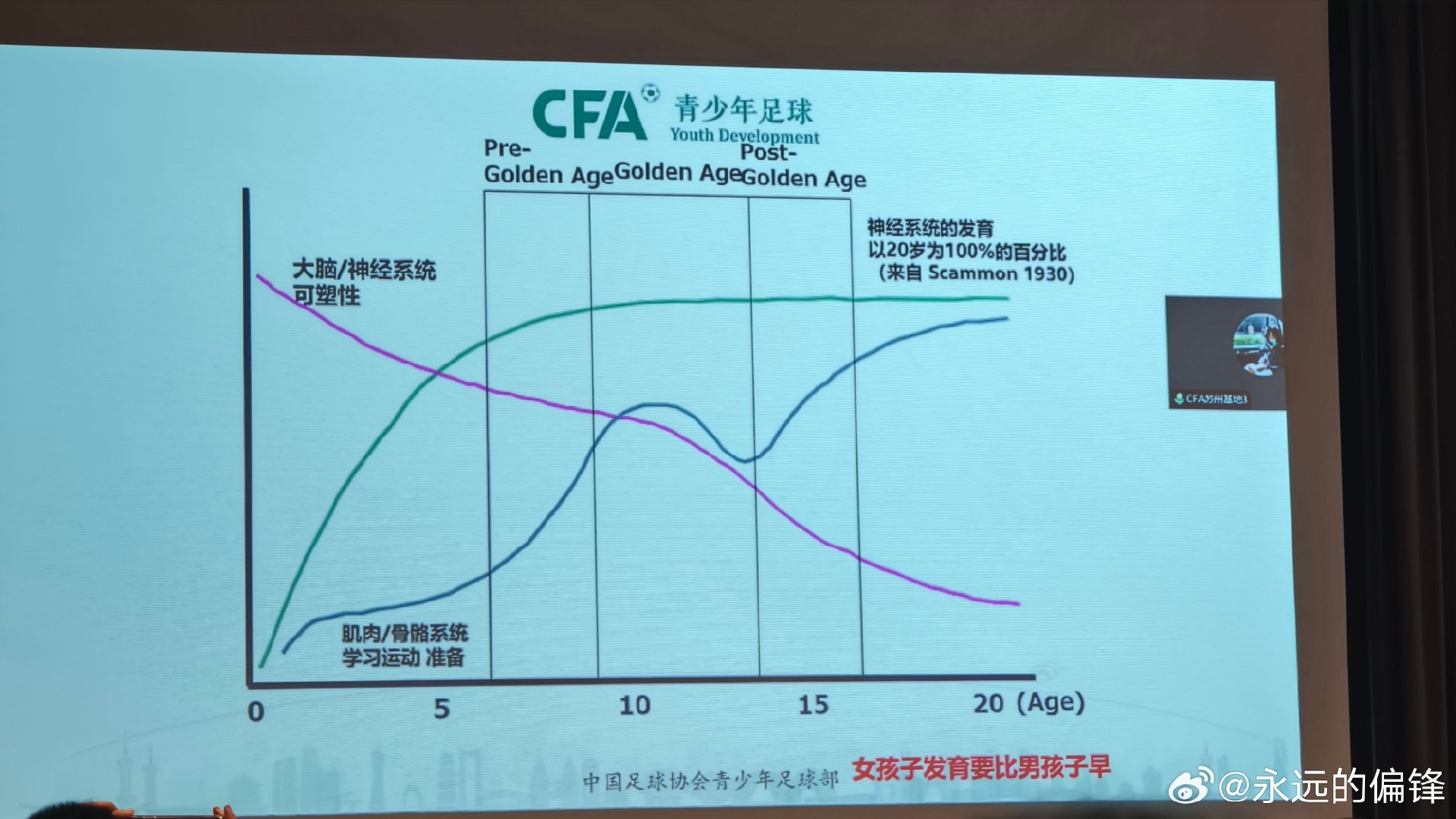Ryuji Kato, Director of Suzhou Youth Training Center: Player portrait and training mode, an interesting discussion

Reporter Chen Yong reports At the meeting of the regional youth training center of the Chinese Football Association held in Suzhou, Ryūji Kato, the youth training director (head coach) of the Suzhou regional youth training center and a former member of the Fukushima National Youth Academy in Japan, introduced the importance of the construction of the regional youth training center, and also organized the participants to discuss the portraits and training models of U15 and U17 players.

In October 2022, the Chinese Football Association launched the joint construction of a high-level reserve talent base with the key city of Suzhou, as a regional youth training center of the Chinese Football Association. The Chinese Football Association is responsible for setting up a technical team with the regional youth training director as the core to drive the construction of the "discovery-tracking-training" path for young players aged 13 to 15 in the region, and promote the development of youth training technology. On the basis of Suzhou's good women's football resources, after two years of joint exploration and efforts by the Chinese Football Association and Suzhou City, in 2024, the Suzhou Regional Youth Training Center was awarded the AFC Youth Academy of the Year (Women).
The core working team of the regional youth training center is set up by the Chinese Football Association, including the youth training director (head coach), coaches, sports performance director, technical analysis/data specialist, operation team and player education development specialist, and continues to promote cooperation with relevant domestic professional institutions in terms of technical development and player education.
Ryūji Kato, who was born as a goalkeeper and served as the vice president of Japan's Fukushima National Youth Academy, shared the construction of the JFA Youth Academy on the morning of the 9th: The construction plan of Fukushima Academy began as early as 2003 and was officially established in 2006, and then the Japanese Football Association established Kumamoto Ujo Academy (men's football), Sakai Academy (women's football) and Imabari Academy (women's football). Ryuji Kato said that the Japanese youth academy provides comprehensive support for the development of elite players, taking Fukushima Academy as an example, Fukushima Academy has trained as many as six players in the squad of the Japanese women's football team for the Paris 2024 Olympic Games.
Because of his deep cultivation of Japanese youth training, Ryuji Kato introduced the development model of young people of all ages and the shortcomings of Chinese youth football. In his opinion, taking players aged 12 to 15 as an example, Chinese players have insufficient basic skills, only use their dominant feet, lack of running, and have less participation in training and games.

He shared a graph of youth football development, and the legend contains three curves: brain/nervous system plasticity, which continues to decline from 0 to 20 years old; Corresponding to the development of the nervous system, it is a rapid rise between 0 and 10 years old, and a slow growth and stable at 10 to 20 years old; The musculoskeletal system's ability to grow and learn to move rises rapidly between the ages of 0 and 10, then repeats, and gradually rises after the age of 15. He gave the development path of physical, technical, tactical and confrontation at the age of 0 to 11, the introduction period from the age of 12 to 15, the period of implementation of the basic elements from the age of 16 to 17, and the period of completion after the age of 18.
Ryuji Kato said that consistent guidance is the basic principle of youth development, and it is necessary to maintain the consistency of youth football training and development, and cultivate football players from a long-term perspective.

On the afternoon of the 9th, Ryuji Kato held a group discussion on the portraits of U15 and U17 players, and the participants were divided into several groups to discuss and analyze the portraits of U15 and U17 players, and each group had to give their abilities and characteristics about U15 players and U17 players after the discussion.
On this basis, there was a second discussion, in which the groups proposed solutions to the portraits of the U15 and U17 players. In fact, this is also the principle that the coaching staff of the national junior team has always adhered to: the analysis of training and games is not the indoctrination of the head coach, but always the players discuss and summarize in groups, and the coaches supplement the explanation.
Taking the reporter's group as an example, aiming at the portrait of a 17-year-old player, the group believes that 17 years old is the transition period from teenager to professional player, and should have good ability to read the game. Regarding the solution, the group believes that under the overall tactical framework, the coach should use specific techniques and tactics in a heuristic and encouraging way, rather than a directive way, and discuss and analyze the multiple possibilities of decision-making after the game, and the coach should give due guidance in the process.
The delegates also gave suggestions on maintaining love, basic technical ability, high-quality application of game scenarios, scientific and rational training, maintaining high intensity and maintaining confrontation, physical fitness and strength development, player responsibility and team spirit, player social communication and exchange, and external communication.


Wonderfulshortvideo
World class Rakitić 👏


Can Grace catch Leah? 😅 Find out in ‘The Lionesses Chase’ on YouTube now 👀


User GoalGuru has posted a video.


One of the most underrated players of all time


Is Vivianne Miedema England’s biggest threat? 🤔


User GameGladiator has posted a video.








 Links
Links
 Contact
Contact
 App
App


